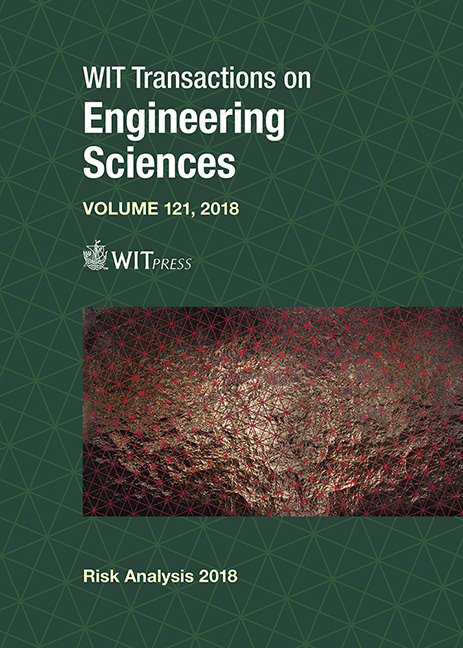A STUDY OF THE COMBINATION OF RISK ANALYSIS WITH A CITYWIDE LANDSLIDE EARLY WARNING SYSTEM
Price
Free (open access)
Transaction
Volume
121
Pages
11
Page Range
21 - 31
Published
2018
Paper DOI
10.2495/RISK180021
Copyright
WIT Press
Author(s)
JOON-YOUNG PARK, SEUNG-RAE LEE, DEUK-HWAN LEE, GOU-MOON CHOI
Abstract
Due to sharp increase in damages from localized heavy rainfall-induced landslide disasters in Korea since 2000s, there has been increasing interest in researches on the development of effective, practical, and reliable decision-making supportive tools in the disaster management such as early warning systems and risk assessment frameworks. As one of representative outcomes from the researches, a citywide landslide early warning system (LEWS) was developed and implemented in the local government of Busan, the second largest city of Korea, and now under test-operation. With the brief overview on distinctive features of the system, the paper specifically focuses on the concept of debris-flow risk analysis results presented in real-time with the highest warning level, Emergency. Since the areas of Emergency can be theoretically interpreted as debris-flow source areas and they are to be progressively expanded according to the accumulated rainfall input data (e.g., continuous rainfall amount), the initial volume of debris-flow corresponding to a continuous rainfall amount was estimated, and accordingly, numerical simulations and quantitative analyses of debris-flow movements, vulnerabilities and socio-economic properties of risk elements were conducted in the predicted deposition area. A case study was conducted for a vulnerable site to debris-flow in a mountain of Busan. Lastly, thresholds based on human vulnerabilities were introduced and discussed in order to supplement the limitations of risk information based on the building vulnerability.
Keywords
landslide, debris flow, risk analysis, early warning system, threshold





